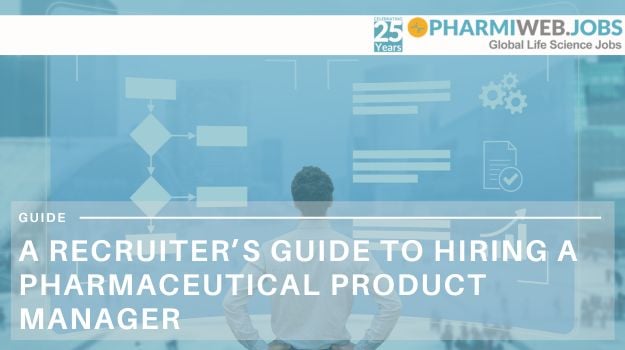A Recruiter’s Guide to Hiring a Biostatistician

In this recruiter guide, we explore the essential considerations for you to keep in mind when hiring a Biostatistician. From understanding the unique demands of the role to identifying key competencies and conducting effective interviews, this guide will help you to focus your candidate search and engage your target audience of talent.
Understanding the Role of a Biostatistician: What are the Key Responsibilities?
Primarily, biostatisticians apply statistical methods and mathematical principles to design experiments, gather and scrutinise data, and interpret findings to draw meaningful conclusions. Their work aids in understanding the effectiveness of medical treatments, analysing the spread of diseases, and assessing the impact of environmental factors on public health.
This entails not only the collection and analytical interpretation of data but also participating in the planning and execution of studies, disseminating results, and even contributing to the statistical refereeing process to ensure rigour and reliability in scientific research.
Defining Your Candidate Profile: What Does a Successful Biostatistician Look Like?
Whilst the candidate qualities you’ll be seeking will vary between roles, some of the key skills, knowledge, and traits to look out for include:
- Statistical analysis and mathematical skills: These are the core skills that enable biostatisticians to design studies, analyse data, and interpret results. They provide the foundation for creating statistical models and drawing meaningful conclusions from complex datasets.
- Proficiency in statistical software and programming languages: This proficiency is essential for efficiently processing and analysing large datasets and for the customisation of statistical analysis techniques. Look out for skills with tools such as R, SAS, Python, and SPSS which are used for data manipulation, creating statistical models, and performing simulations.
- Research skills: Research skills enable biostatisticians to design robust studies and contribute to scientific advancements. Understanding research methodologies ensures the reliability and validity of analyses.
- Problem-solving skills: Critical for identifying and addressing issues within studies, problem-solving skills allow biostatisticians to create innovative solutions to statistical challenges, from design flaws to data anomalies.
- Communication skills: Communication skills are necessary for explaining complex statistical concepts in an accessible manner to non-statisticians, including scientists, policymakers, and the public. They are also important for writing clear, comprehensive research reports and presenting findings at conferences, in academic journals, or in policy briefs.
- Attention to detail: Strong attention to detail ensures the accuracy and precision of data analysis, which is crucial in fields where findings can significantly impact public health and policy. It is critical in the data cleaning process to identify and correct errors, during analysis to ensure rigorous methodology is followed, and when reviewing results to prevent incorrect conclusions.
Remember that by focusing on skills-based hiring, you’ll allow for a more inclusive and diverse candidate pool, as you’ll be able to consider a broader range of candidates and create opportunities for those who may have been previously overlooked based on traditional criteria.
Interviewing Your Candidates: What Questions Could You Ask?
When interviewing candidates for the role of biostatistician, incorporate some of the below questions to help you assess their suitability for the role:
- Can you describe your experience with statistical software? Which ones are you most proficient with?
- What statistical methods do you typically use in your analyses, and why?
- How do you ensure the validity and reliability of your data before conducting any statistical analysis?
- Can you explain a complex statistical concept to someone who does not have a background in statistics? (e.g., p-values, confidence intervals, or regression analysis)
- Describe a challenging data set you’ve worked with. What made it challenging and how did you handle it?
- Have you ever had your conclusions or methodologies challenged? How did you handle the situation?
- What experience do you have with clinical trial data? How do you approach the design and analysis of a clinical trial?
- Can you discuss a time you utilised predictive modelling? Which model did you use and what was the outcome?
- How do you stay updated with new statistical methods and practices in the field of biostatistics?
- Describe a project where you collaborated with non-statisticians. How did you ensure effective communication and understanding?
- Discuss a successful research project you've been a part of. What was your role, and what was the impact of the research?
- How do you prioritise tasks and manage your workload when working with multiple projects or tight deadlines?
- Explain how you would perform a survival analysis and when it's appropriate to use this method.
- What experience do you have with data visualisation and which tools do you prefer for presenting your findings?
- Describe a situation where you had to analyse a large data set. What strategies did you employ to ensure efficiency and accuracy?
- How do you handle missing or incomplete data? Can you explain your preferred imputation method?
- In your view, what is the biggest challenge facing biostatistics today, and how can it be addressed?
- Can you discuss a time when your analysis did not support the initial hypothesis of the study? How did you proceed?
- What experience do you have with genetic data analysis or bioinformatics?
- How do you ensure your statistical models are robust and not overfitted to the data?
Remember to tailor the questions to your specific needs, and to delve deeper into the candidate’s responses to gain a comprehensive understanding of their competencies.
Assessing Your Candidates: What Tasks Could You Set?
When interviewing candidates for the role of CDM, utilising tasks and assessments can be instrumental in employing skills-based hiring techniques. These focus on evaluating candidates’ skills and assessing their capabilities through practical simulations or exercises.
Here are five tasks and assessments to consider:
- Statistical Analysis Project: Provide a dataset and ask candidates to conduct a specific analysis using statistical software (e.g., SAS, R, or Python). This can include data cleaning, applying suitable statistical tests, and interpreting the results. The task should evaluate their ability to use software, understand data, and apply correct statistical methods.
- Programming and Data Manipulation Exercise: Give a coding exercise that requires candidates to manipulate, clean, and extract insights from a given dataset. This task assesses proficiency in programming languages relevant to biostatistics (such as R or Python) and their ability to prepare data for analysis.
- Critique a Published Study: Provide a published research paper and ask the candidates to critique its statistical methods, analysis, and conclusions. This assesses their critical thinking, knowledge of research methodologies, and ability to evaluate the appropriateness and execution of statistical techniques.
- Presentation of Previous Work: Ask candidates to present a past project or research they have worked on, focusing on the statistical methods used, challenges faced, and how they were overcome. This allows insight into their experience, communication skills, and problem-solving approach.
- Statistical Methodology Written Test: Prepare a written test that includes questions on statistical theories, the application of different statistical tests, interpreting data scenarios, and designing study protocols. This helps evaluate their theoretical knowledge, practical understanding of biostatistical concepts, and their ability to apply this knowledge to real-world problems.
These go beyond traditional interview questions, enabling you to observe candidates in action and gain more insight into their competencies and potential fit for the role.
Remember that tasks and assessments should be designed to allow candidates to show their potential, and not to trick them out. These tasks will take time out of their day, and as a recruiter, you should respect this time by:
- Giving candidates plenty of notice about the task at hand
- Providing in-depth information on what the task/assessment will involve and the criteria that will be used to measure success
- Providing tailored feedback on the task, giving candidates actions to take away
Benchmarking Your Salaries: What is the Average Pay in the UK and USA?
Whilst salary will always depend on numerous factors including location, employer type, contract type, years of experience and industry, we’ve included below the average salary for a Biostatistician in both the UK and USA, based on data collected by Indeed.
UK
In the UK, the average base salary for a Biostatistician as of April 2024 is £62,186 per year. The highest-paying cities for this role are London (£59,548), Edinburgh (£56,041), Cambridge (£51,745), Reading (£50,310), and Manchester (£50,107).
USA
In the USA, the average base salary for a Biostatistician as of April 2024 is $126,267 per year. The highest-paying cities for this role are Raleigh, NC ($159,790), Chicago, IL ($159,782), Redwood City, CA ($154,453), South San Francisco, CA ($150,383), and Irvine, CA ($135,830).
Get Help with Your Hiring
Hundreds of Biostatisticians are already using PharmiWeb.Jobs to find their next role. Find out more about how we can connect you with this talent pool here.


